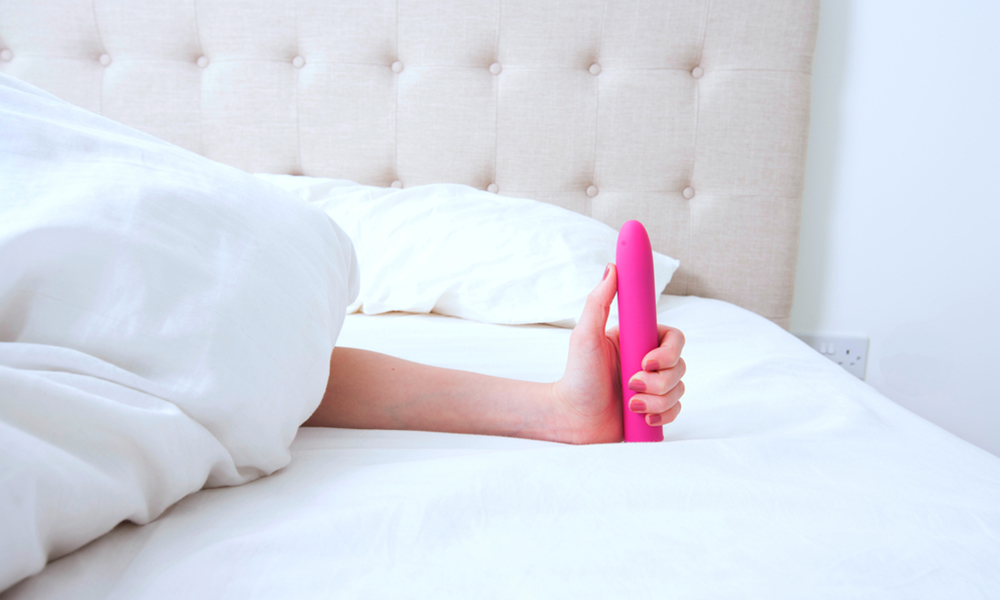“Oh come on, if you’re going to get a vibrator, at least get one called ‘The Horse’” – Sex and the City
For many women in Victorian Britain, a visit to their gynecologist so they could have an orgasm was a weekly diary date. No questions asked. Back then, it was seen as medical treatment for a condition known as “hysteria”, the perceived symptoms of which included anxiety, irritability, sexual desire – even “tendency to cause trouble”. Hysteria was believed to be caused by “congestion of the uterus”, and the cure? Doctors oiled up their hands and got stuck in. Treatment could take an hour (for this reason, it was often delegated to nurses) and the result was a “hysterical paroxysm”, known to us today as an orgasm.
As industrialization spread, and advances such as railways, electricity and communication by telegraph saw Apple-Store levels of frenzy, it was only a matter of time until technology took the problem out of doctors’ (tired) hands and into electro-mechanical devices. These eventually became what we today know as vibrators.
The evolution
Originally, vibrators were huge metal objects bolted to the doctor’s desk – but they quickly evolved, and by the early 1900s smaller ones were available for home use. In the UK they were the fifth domestic appliance made available for the home, pre-dating the iron and the vacuum cleaner. At this time, they still weren’t openly being advertised as sex toys. So how, in 100 years, did we get from there to today, when women and men as well buy a million vibrators a year?
A turning point
Vibrators were first “outed” as something (gasp) sexual in the 1920s – when they cropped up in early porn films. Around the same time, hysteria itself was being questioned as a valid condition. Doctors were figuring out that masturbation wasn’t unhealthy and people were beginning to think in terms of mental, rather than physical conditions. As psychotherapy and counseling treatments were growing, hysteria was on the way out.
Through the 1930s very few vibrators were manufactured, because the recession meant people couldn’t afford them. Then, during the Second World War, they weren’t produced because they required a lot of metal, which was needed for the war effort. Plastic and silicone were not developed for use until later.
Vibrators resurfaced in the sixties – first with barbers’ massagers, which were intended to massage men’s heads… until a few clever barbers took them home to experiment. Then, in the seventies, everything changed. Sex therapy started, and therapists found women were using soft-bristle electric toothbrushes as masturbatory devices and getting great results with “inorgasmia” (the inability to reach orgasm). When word got out, sales went to the roof.
This coincided with first-wave feminism, who dared argue that women did not need men to have orgasms and that self-pleasure was a positive thing. Hard to imagine now, but back then it was still believed women should and could reach orgasm through penetration alone.
End of a taboo
Since then, vibrators have become cord-free, multi-speed and multi-purpose – encouraged not just for women, but for men and for couples to use in their happy, healthy sex lives. Most recently, we’ve seen vibrators that pulse to music, or will even give you a special wake-up call in the morning. Today, any negative ideas about masturbation have been completely ditched, along with the sense that sex toys are threatening to men. Actually, in a study published in the Journal of Sex & Marital Therapy, fewer men than women felt vibrators were something to be intimidated by. So go ahead, be positive about it – using vibrators is an exciting, sexy thing for a woman to do and for a couple to experience with.
Have a sensual week,
Gabrielle Moore
P.S. Also, the idea that a vibrator can desensitize a woman’s genitalia is completely wrong, so encourage her to use it as often as she likes it. This kind of masturbation is bound to increase her sexual appetite, so more good news for you! If you want to know about even more amazing homemade sex toys, please check out the complete guide by clicking here!









